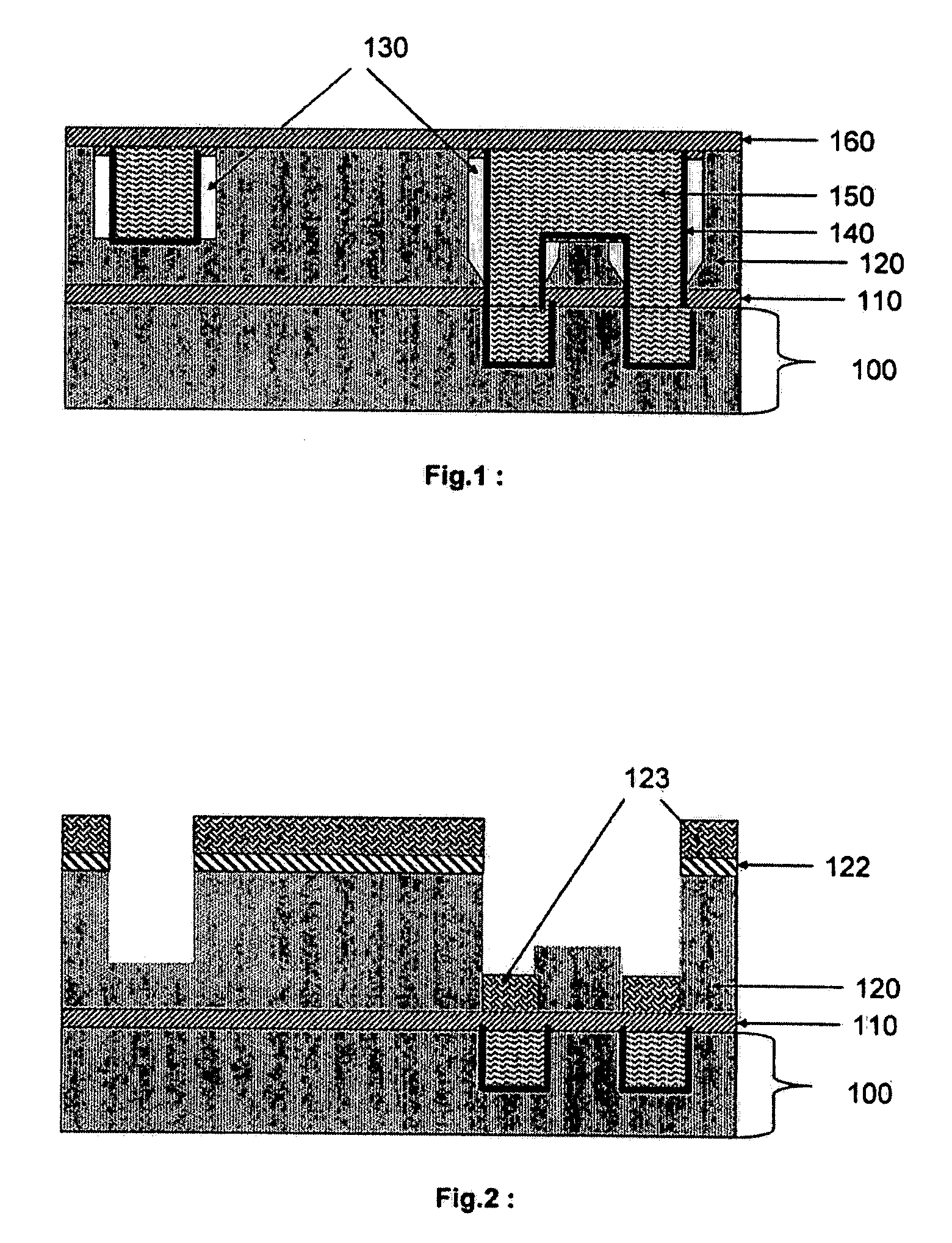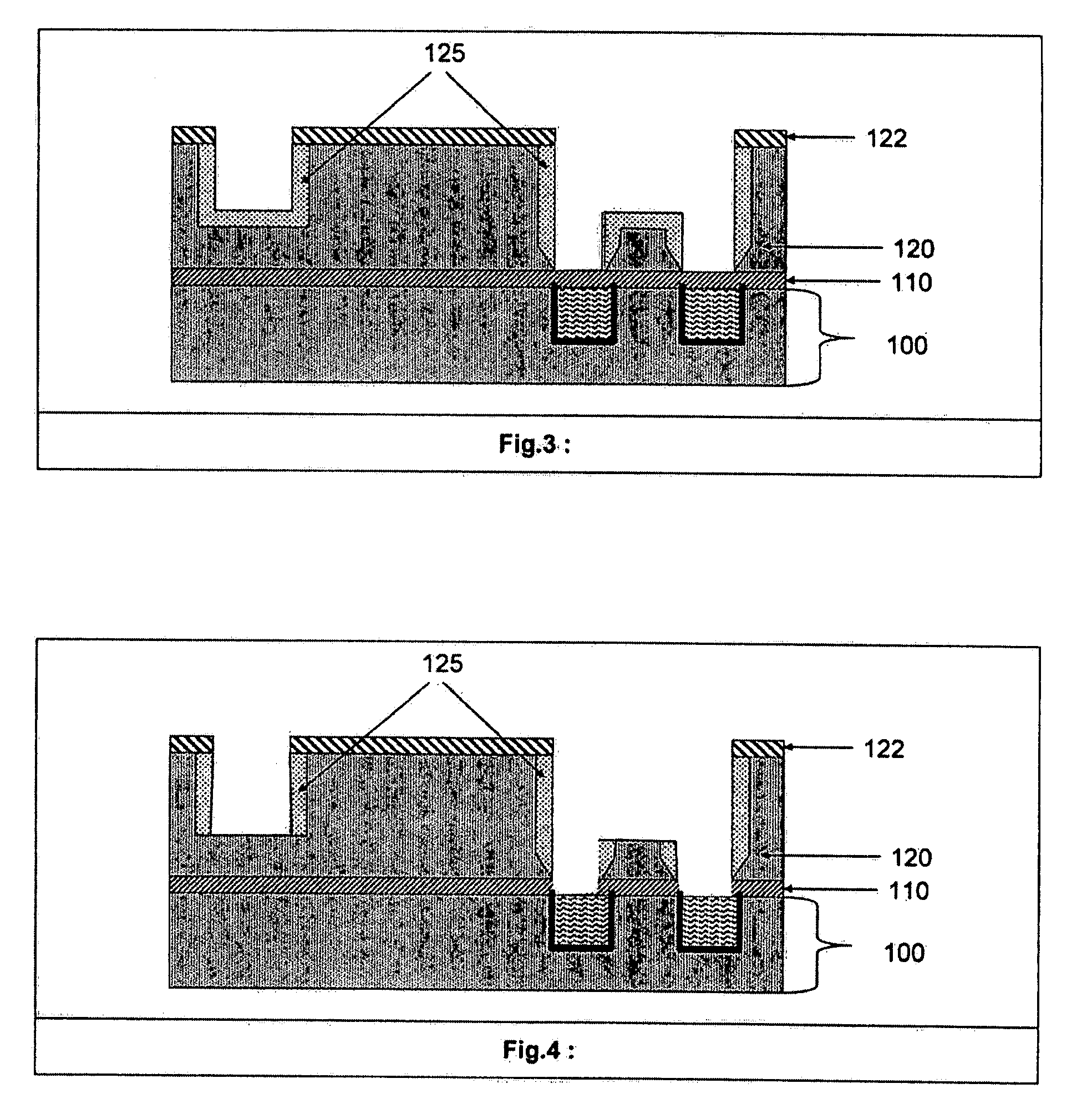Interconnect Structures Incorporating Air-Gap Spacers
a technology of interconnect structure and air gap, which is applied in the direction of solid-state devices, basic electric elements, instruments, etc., can solve the problems of poor interconnect breakdown behavior, affecting chip speed and thus chip performance, and generally difficult to achieve, so as to facilitate a quick pinch
- Summary
- Abstract
- Description
- Claims
- Application Information
AI Technical Summary
Benefits of technology
Problems solved by technology
Method used
Image
Examples
Embodiment Construction
[0038]The process sequence used to generate the interconnect structures with air-gap spacers is described with reference to the accompanying drawings. FIG. 1 shows a schematic cross section view of the proposed air-gap interconnect structure, the left side of FIG. 1 illustrating the placement of a trench and the right side, the placement of a combined or stacked trench and via contiguous to one another and having a common axis, with the trench configuration comprising the top of the structure and the via at the bottom. A two level structure is shown with 100 representing an underlying build with a dielectric material 120. A cap layer, 110, is deposited on this level and a dual damascene interconnect build with air-gap spacers is shown. The structure is comprised of the following: 120 is the dielectric material and is a porous or dense material comprised of silica or an organosilicate. The air-gaps are represented by 130 and depending on the metal structure may be limited to the line...
PUM
 Login to View More
Login to View More Abstract
Description
Claims
Application Information
 Login to View More
Login to View More - R&D
- Intellectual Property
- Life Sciences
- Materials
- Tech Scout
- Unparalleled Data Quality
- Higher Quality Content
- 60% Fewer Hallucinations
Browse by: Latest US Patents, China's latest patents, Technical Efficacy Thesaurus, Application Domain, Technology Topic, Popular Technical Reports.
© 2025 PatSnap. All rights reserved.Legal|Privacy policy|Modern Slavery Act Transparency Statement|Sitemap|About US| Contact US: help@patsnap.com



